Electric cars are going mainstream. What began as a trickle of niche EVs just a few years ago has become the fastest-growing segment of the automotive industry.
With the Biden-Harris administration’s plans to build 500,000 EV chargers nationwide, tough new EPA emissions standards and certain states eyeing new combustion car bans as early as 2030, automakers and consumers alike have turned more focus toward the adoption and growth of plug-in cars by the end of this decade.
Today, more than two dozen automakers offer a combined 40-plus full-electric models boasting over 200 miles of range, unique high-tech features and, increasingly, performance that outclasses comparable gasoline-powered models. If you’re thinking about buying an electric car, there have never been more choices for you than there are today.
Over the last 15 years, I’ve evaluated and driven hundreds of cars, trucks and SUVs for review here at CNET. I’ve also driven just about every mass-market electric vehicle ever sold in the US, and even some that have yet to hit the road. In this list I’ve used that experience to help you understand what you should look for in a good electric car, how these battery-powered machines work and where the technology is heading in the future, near and far.
What is the best overall electric car?
Tesla’s Model 3 and Model Y are the 800-pound gorillas of current EV landscape.
There aren’t just more EVs to choose from. There’s also a wider gamut of available cruising ranges, prices, performance and luxury options, allowing prospective buyers to fine-tune their choice to meet their specific needs and budget. Whether you’re looking for basic transportation for zero-emissions commuting or a high-end technology showcase for road-tripping, there’s an EV that fits the bill.
Of the EVs available today, Tesla’s Model 3 sedan and Model Y SUV offer the best balance, broadest appeal and, thanks to their full qualification for federal EV tax credits, one of the best values for most drivers looking to make the jump to electric motoring. Identical in every way other than interior volume, the Models 3 and Y boast more than enough range to tackle a week of commuting on a single charge — 358 and 330 miles, respectively — or a long road trip with minimal stops for charging.
As Tesla vehicles, the Model 3 and the Model Y SUV also have native access to the Supercharger network, the most widespread and reliable DC fast charging networks in the nation. They’re by no means perfect — CNET editors certainly had our share of issues with our long-term Model Y — but that’s balanced by Tesla’s consistent over-the-air software improvements and their best-in-class performance.
Best electric cars of 2024
Starting at $41,630, the 2023 Tesla Model 3 Standard Range is a tough act to follow, costing less than some combustion-powered sedans in its class once the dust settles after up to a $7,500 federal tax credit and any qualifying state EV incentives. Shoppers with a bit more room in the budget can opt to upgrade to longer ranging and more powerful dual-motor variants, but this configuration’s 272 miles is plenty for year-round daily driving with the occasional road trip, while its efficiency (4 miles per kWh) is the third highest on the road today, keeping operating costs low.
The Standard Range battery is mated with a single-motor, rear-wheel-drive variant of Tesla’s electric powertrain. Its 0 to 60 mph sprint of 5.8 seconds won’t snap your neck, but it’s more than quick enough for strong, silent merges and passing. Plus, it’s available with all of the cutting-edge dashboard technology and driver aid tech offered on the automaker’s more expensive models.
Pros
- Excellent performance, the highest range for the price
- Affordable price bolstered by federal tax incentives
- Native access to Supercharger fast charging network
Cons
- Dashboard tech moves too many basic features to touchscreen
- Reputation of inconsistent build quality
- Expensive Autopilot and FSD driver aid tech upgrades
Additional Attributes
- Range: 272 miles
- Efficiency: 4 mi/kWh, 132 mpge
- Max DCFC: 250 kW, 10 to 80% in 18 minutes
- Features: Available FSD driver aid, connected 15.4-inch dashboard display
- Starting price: $41,630
Starting at just $28,795, the 2023 Chevrolet Bolt EUV is one of the most affordable electric cars on the road today. Larger than its sibling, the Bolt EV, this unassuming subcompact crossover rocks more interior volume than its competitors while still remaining extra compact and city-parkable. The ace up the Bot EUV’s sleeve is available GM Super Cruise — a surprisingly high-tech addition to this basic budget EV — easily the best hands-free highway driving assist technology I’ve ever used, making long commutes significantly more relaxing.
At 247 EPA-estimated miles per charge and a 55-kW DC fast charging max, the EUV isn’t the best pick for long road trips, but the compact runabout still offers plenty of wiggle room for city and suburban commuting and running errands. Unfortunately, you’ll have to act fast to get one. GM has announced that production is coming to an end this year with orders closing for good shortly before the final examples roll off the line in November 2023. Once it’s gone, the next best affordable EV will be significantly more expensive.
Pros
- Small, but surprisingly spacious
- Excellent urban driving range
- Available with GM Super Cruise hands-free highway assist
- Dashboard tech leans heavily on Apple CarPlay, Android Auto for navigation, entertainment and more
Cons
- Slow charging speed discourages long road trips
- Production ending at the end of this year
Additional Attributes
- Range: 247 miles
- Efficiency: 3.45 mi/kWh, 115 mpge
- Max DCFC: 55 kW, 10 to 80% in 46 minutes
- Features: Super Cruise highway assist, Android Auto, Apple CarPlay
- Starting price: $28,795
The new i7 is BMW’s flagship electric sedan, hitting the road with 536 horsepower, 549 pound-feet of torque and every gadget and gizmo in the German automaker’s arsenal. The i7 boasts up to 318 miles of electric range, features generated electric motor tones composed by Hans Zimmer and is one of the first Bimmers available with the automaker’s updated Highway Assistant, which provides Level 2 hands-free driving at speeds up to 85 mph.
Inside, you’ll find perhaps the most opulent cabin that BMW has ever assembled, with crystal controls, high quality leather and cashmere trim. If you think the dual 12.3-inch and 14.9-inch dashboard displays are huge, wait until you get a gander at the 31.3-inch 8K BMW Theater Screen that folds down from the ceiling to entertain rear seat passengers with Amazon Fire TV apps powered by 5G data.
Pros
- Large and luxurious
- Long range and fast charging are great for longer hauls
- Available with BMW’s first hands-free Highway Assistant tech
- One of the best rear-seat entertainment screens in the business
Cons
- Less range than Lucid or Tesla
Additional Attributes
- Range: 324 miles
- Efficiency: 2.63 mi/kWh, 89 mpge
- Max DCFC: 195 kW, 10 to 80% in 34 minutes
- Features: BMW Highway Assistant, hands-free soft close doors, 31.3-inch 8K BMW Theater 5G rear seat entertainment with Amazon Fire TV
- Starting price: $125,195
California-based EV startup Lucid takes the electric car endurance crown with its 516-mile Lucid Air Grand Touring. To accomplish this feat, Lucid stuffed its large sedan with a massive 112-kWh battery pack, but that’s only half the story. The Air also features an impressive aerodynamic design that helps it cut through the air with very little drag and compact electric motors with an efficiency of 3.8 kilowatt-hours per mile. At the other end of the spectrum, the Air’s performance is equally impressive with up to 1,050 horsepower and a 2.6-second 0-to-60 mph sprint.
All that power will cost you. The Air starts at $87,400, but the Grand Touring model tips the scales at $138,000… and that’s not even the most expensive spec.
Pros
- The most range of any EV on sale today
- Touring and Pure specs tie for most energy-efficient EV
- Tons of storage space including two full-size trunks
- Wicked fast 3.0 second 0 to 60 mph
- Now available with wireless Apple CarPlay
Cons
- Extremely expensive
- Awkward dashboard tech, no Android Auto
- Limited driver aid tech relative to competitors at this price
Additional Attributes
- Range: 516 miles
- Efficiency: 3.8 mi/kWh, 89 mpge
- Max DCFC: 300 kW, 10 to 80% in 16 minutes
- Features: 34-inch curved main display, Wireless Apple CarPlay, Alexa voice command
- Starting price: $138,000
Hyundai’s Ioniq 6 is the newest model on this list, hitting dealerships earlier this year, but it also ties for the most efficient electric car you can buy today. The 6’s aerodynamic sedan body rides atop the Hyundai Motor Group’s E-GMP electric vehicle platform — which also underpins SUVs like the Ioniq 5, Kia’s EV6, EV9 and the Genesis GV60 — giving it the edge in range and efficiency over its extended EV family. In its thriftiest Long Range RWD configuration, the Ioniq 6 cruises up to 361 miles and covers 4.17 miles per kilowatt-hour. That’s an EPA-estimated equivalent of 140 mpge.
Beyond simply being thrifty, the Ioniq 6’s battery-electric platform enables up to 233-kW DC fast charging making it one of the fastest charging EVs we’ve tested.
Pros
- Efficient, aerodynamic design
- High efficiency means potentially lower operating costs
- Comes standard with excellent, but not overwhelming dashboard tech
- Standard V2L bidirectional charging port (adapter required)
Cons
- Lozenge-shaped design already looks dated
- No front trunk
Additional Attributes
- Range: 361 miles
- Efficiency: 4.17 mi/kWh, 140 mpge
- Max DCFC: 233 kW, 10 to 80% in 17 minutes
- Features: Standard V2L bidirectional charging, wired Android Auto and Apple CarPlay, available Remote Smart Parking
- Starting price: $46,615
The 320-mile F-150 Lightning is one of the best modern full-size pickups that I’ve driven, electric or not. The Lightning’s utility is enhanced by its electric powertrain, freeing up space under the hood for a massive “frunk” storage space and enabling the powerful Pro Power Onboard mobile power bank system. But what really makes the F-150 Lightning so good is how much it feels like a normal Ford F-150.
The Lightning makes very few compromises to the winning formula that has made the F-Series the best-selling vehicle in America by a country mile. It’ll face serious competition when Chevrolet and Ram’s electric pickups reach the market in the coming years, but for now, Ford is the king of the hill.
Pros
- Massive front trunk
- Familiar F-Series truck features and design
- Excellent suite of standard and available driver-aid tech
Cons
- Tends to blend in with other F-Series vehicles
- Truck shape and weight hurts overall efficiency
Additional Attributes
- Range: 320 miles
- Efficiency: 2.08 mi/kWh, 70 mpge
- Max DCFC: 155 kW, 10-80% in 30 min.
- Features: Available Pro Power 240V V2L mobile power delivery, Ford Blue Cruise hands-free highway assist
- Starting price: $73,135
The Tesla Model Y is everything that EV enthusiasts love about the Tesla Model 3 with a bit more cargo space. The Y’s taller seating position, extra headroom and additional cargo capacity have made it slightly more popular than its sibling, narrowly edging out the Model 3 as the best-selling electric car in America. Heavier and with a larger aerodynamic profile than the 3, the Model Y can roam up to 330 miles per charge. That’s enough to stand head and shoulders above the rest of its class.
Add to that access to Tesla’s extensive and, more importantly, reliable Supercharger public charging network and the promise of constant improvement via over-the-air updates (that is, software updates to enhance performance) and it’s no wonder the Model Y sells so well. And like the smaller Model 3, the Tesla Model Y also recently regained qualification for the $7,500 federal EV tax credit, bringing its starting price to an adjusted $41,630.
Pros
- Native access to Tesla Supercharger network
- Massive range for the money
- More spacious than Model 3
Cons
- Controversial Autopilot and FSD driver aid tech are expensive upgrades
- Reputation for subpar build quality
Additional attributes
- Range: 330 miles
- Efficiency: 3.85 mi/kWh, 123 mpge
- Max DCFC: 210 kW, 10 to 80% in 17 minutes
- Features: Available FSD driver aid, connected 15.4-inch dashboard display, optional third-row seating
- Starting price: $51,880
Rivian won my heart with the quirky and adventurous R1T electric pickup and now it’s back with a more practical take on its battery-powered truck platform. The new Rivian R1S wraps the automaker’s design around the more family friendly two-box silhouette of an SUV. The result retains the whimsical elements that I love — the pill-shaped headlamps and instantly recognizable light bars at either end — but makes room for more adventurers onboard.
Rivian has also launched its new dual-motor electric powertrain option. Yes, this is a step down from the power of the quad-motor setup, but it’s also a big step up in range, efficiency and affordability making the 533-hp, 352-mile R1S Dual Motor with the Large battery pack the sweet spot for all but the most hardcore off-road enthusiasts.
Pros
- Bold, eye-catching design
- New dual-motor powertrain offers more range and efficiency for less money
- Even more powerful Performance upgrade available
Cons
- Touchscreen-heavy dashboard may turn off traditional truck and SUV shoppers
- Driver aid tech needs more time to bake
Additional Attributes
- Range: 352 miles
- Efficiency: 2.33 mi/kWh, 78 mpge
- Max DCFC: 220 kW, 10 to 80% in 23 minutes
- Features: Access to Rivian Adventure Network charging stations, Gear Guard camera based security system, over 36-inch water fording depth, excellent off-road capability
- Starting price: $84,000
The Porsche Taycan is expensive (it’s a Porsche, after all) and its range falls short of the class-leading Tesla Model S, but there’s more to enjoying an EV than just range. Driving a Taycan tells a completely different story, and I’m confident that the sweet spot GTS model is the most fun you can have in a sporty EV today. With 590 horsepower in this spec and a 3.5-second 0 to 60 mph sprint, the Taycan GTS is quick, but it also corners and connects to the road with a precision like no other EV I’ve ever driven. And the build quality, much like its driving dynamics, is basically unbeatable.
The range, officially estimated at 246 miles for the Taycan GTS, is more than adequate for daily driving, but it’s also not difficult to exceed that when driving with a light foot. We reckon Porsche is underpromising here so that it can overdeliver on real world range. Plus, the automaker’s 800-volt electric architecture charges quickly — it’s capable of climbing from 10% to 80% in 23 minutes at a powerful charging station.
In addition to the sedan profile, the Taycan is also available in Sport Turismo and Cross Turismo electric sport wagon configurations for bonus style and utility.
Pros
- The most fun I’ve ever had behind the wheel of an EV
- Excellent build quality and design matches the price tag
- The GTS is the sweet spot for range and performance
Cons
- Expensive for the range promised
- Less cargo space than Tesla Model S
Additional attributes
- Range: 246 miles
- Efficiency: 2.44 mi/kWh, 83 mpge
- Max DCFC: 270 kW, 10 to 80% in 20 minutes
- Features: Driver-focused Porsche Advanced Cockpit, PCM infotainment with integrated Apple Music and Spotify, standard Apple CarPlay, Android Auto
- Starting price: $140,950
Comparison of the best electric cars for 2024
| Name | Max Range (mi.) | Price (incl. destination) | |
|---|---|---|---|
| Best electric car for most people | 2023 Tesla Model 3 Standard Range | 272 | $41,630 |
| Best affordable electric car | 2023 Chevrolet Bolt EUV | 247 | $28,795 |
| Best luxury electric car | 2023 BMW i7 xDrive60 | 324 | $125,195 |
| EV with the most range | 2023 Lucid Air Grand Touring | 516 | $138,000 |
| Most energy efficient EV | 2023 Hyundai Ioniq 6 SE Long Range RWD | 361 | $46,615 |
| Best electric truck | 2023 Ford F-150 Lightning 4WD Extended Range | 320 | $73,135 |
| Best small electric SUV | 2023 Tesla Model Y Long Range AWD | 330 | $51,880 |
| Best three-row electric SUV | 2023 Rivian R1S Dual Motor Large | 352 | $84,000 |
| Best electric sports car | 2023 Porsche Taycan GTS | 246 | $140,950 |
Factors to consider before buying an EV
Range: How far an electric car can go on a single charge is usually the first number shoppers check when considering an electric vehicle. Longer range means fewer stops on long trips and more peace of mind between charging stations on the road. Range can also be significantly affected by factors such as extremely cold or hot weather, along with your driving habits. Plus, all batteries will degrade somewhat over the lifespan of the vehicle, so consider picking an EV with a bit of extra wiggle room in the battery pack. That said, while range is important to the driving experience, it may not be the most important number on the spec sheet.
Efficiency: The most overlooked number on an EV’s spec sheet, but I think it’s the most important for a daily driver. Efficiency tells you how much electricity an electric car, truck or SUV uses when cruising, measured in miles per kilowatt-hour or kilowatt-hours per 100 miles. With this number and your local energy rates, you can easily calculate how much it costs to operate an EV and how much you could potentially save compared to a conventional combustion car.
An EV’s maximum DC fast charging speed can have a big impact on how long a road trip takes.
Charging: Most EVs can recharge overnight at a level 2 home AC charger, and starting each day with a full battery can eliminate a lot of range anxiety. But for long road trips (or for apartment dwellers who can’t recharge their EV every night), an EV’s DC fast charging experience can have an even larger impact on EV ownership than its range. Most EVs I recommend can cover at least 200 miles between stops, but DC charging speed can mean the difference between that being a quick 20-minute break or being stuck waiting for up to an hour. You’ll also want to consider what EV charging networks (Tesla Superchargers, Electrify America, Rivian’s Adventure Network and others) cover your most-beaten paths.
Features: An electric car is more than just a battery, motors and a charging port. It’s also a car, which means it needs to be a good car that meets your needs for passenger and cargo capacity, cabin technology, safety and driver aid technologies and style. Some EVs even offer bidirectional charging, which allows owners to draw power from an EV’s battery pack while parked, keeping the lights on at home during a blackout or powering a camp, work site or tailgate party.
How we test electric cars
I’ve driven almost every EV model sold in the US over the last 15 years — from the 62-mile 2012 Mitsubishi i-Miev to the 516-mile Lucid Air Grand Touring — but the process always starts by getting behind the wheel and driving them in real world conditions on public roads. For each car I test, I cover over 200 miles behind the wheel on a mixed driving route that includes dense urban roads (complete with potholes), long stretches of highway driving and some good fun twisty mountain roads mixed in for flavor.
On the road, I test the DC fast charging speed and experience, evaluate driving dynamics including handling, acceleration and braking performance and also compare my real world experience, tested range and efficiency with estimates reported by the US EPA, both to double check the official numbers against the real world and to make sure my experiences represent those of the typical American driver. Along the way, I also check each car’s cabin comfort, dashboard tech and driver aid and safety features to get a feel for where each vehicle fits in my experience testing hundreds of combustion, hybrid, hydrogen and, yes, battery-powered cars for CNET reviews.
I’ve been reviewing cars and car technology at CNET for over 15 years.
Other EVs we tested
I’ve fallen head over heels for our long-term 2022 Kia EV6 Wind AWD, which has a similar powertrain and performance to Hyundai’s Ioniq 5 and Ioniq 6. I prefer the look and suspension tuning of the EV6 to its cousins, but would probably recommend the Ioniq 5 to EV newbies for one reason: It comes with a charging cable. The EV6 does not, which means you’ll need to source your own. The Kia does, however, include Hyundai/Kia’s flexible V2L bidirectional charging adapter, which is nice.
Volkswagen’s ID.4 boasts solid range, performance and value and is more spacious than other electric SUVs in its class. However, awkward dashboard touch controls and strange ergonomic design decisions — such as the omission of rear window switches on the back doors — kept it from clicking with me.
I also enjoyed my time piloting BMW’s iX and, particularly, the i4 M50. Both are excellent options for drivers looking for luxurious alternatives to Tesla’s Model Y and Model 3, but they each have a more conventional dashboard design, more premium fit and finish and more driver-focused performance.
Our long-term 2022 Kia EV6 Wind AWD has been enjoyable and reliable for over 6,000 miles of testing.
FAQs
How much range should I look for in an electric car?
How much range you’ll need from an EV will vary depending on your individual needs and driving habits. For most drivers with an average American commute — around 55.2 miles according to the most recent US Census Bureau data — an EV in the 200 to 300 mile ballpark will provide adequate range for daily driving, unexpected errands and the occasional road trip. This leaves some wiggle room for apartment dwellers, who may not be able to charge every night and for drivers who live in areas with extreme heat or cold weather, which can sap as much as 41% of EV’s stated range in the most extreme cases.
Check out our explainer on how much range to target when buying an electric car.
How long does it take to charge an electric car?
Broadly, there are three levels of EV charging that you need to know. DC fast charging is the fastest charging method used by public charging networks, such as Electrify America, EVgo or Tesla Superchargers, getting you from 10 to 80% full (the most efficient range for fast charging) in as little as 18 minutes or up to an hour. Level 2 home or public stations average around 9.6 kW, getting you around a day’s worth of driving with an overnight session. Level 1 chargers plug into the familiar NEMA 5-15 home outlet — the same one your TV or laptop uses — and can take from 12 to 24 hours to trickle charge at Level 1, making this only really useful as a last expedient when there are no other options.
Are electric cars more expensive than gas-powered cars?
Within the same class, EVs tend to be more expensive than their combustion-powered cousins due to the rare and costly materials that make up their large battery packs. Economies of scale and new production processes could eventually result in at the point of purchase price parity, but for now prospective buyers will want to look to any available federal and state tax incentives or rebates to offset the cost. Additionally, EVs can be less expensive to operate, potentially saving money over the long term.
Are electric cars as safe as gas-powered cars?
Are electric cars better for the environment than gas-powered cars?
Lacking tailpipe emissions, transitioning to electric cars can greatly improve local air quality, but in areas where electricity is generated with fossil or carbon-based fuels, EVs will still have a macro environmental impact. Factor in the mining of rare battery and motor materials and the answer becomes less clear.
Many major automakers have pledged to build carbon neutral supply chains, factories and manufacturing processes, which could further reduce EVs’ global environmental impact. Meanwhile, moving regional electrical grids to renewable sources while individual homes make use of rooftop solar generation can make an electric car more and more environmentally friendly over its lifetime.










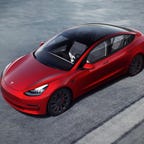
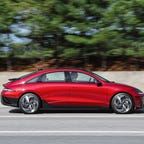
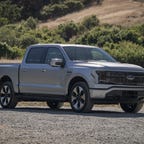
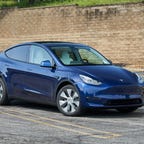
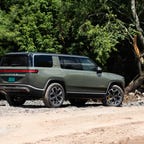
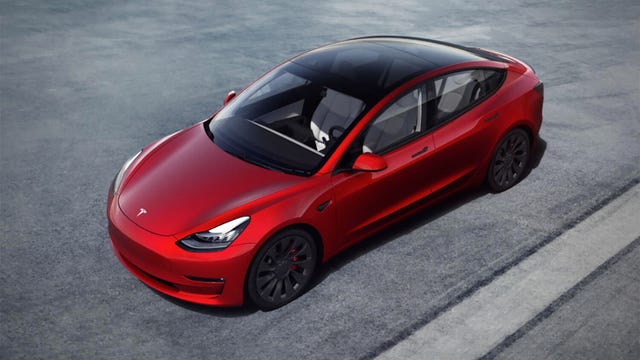
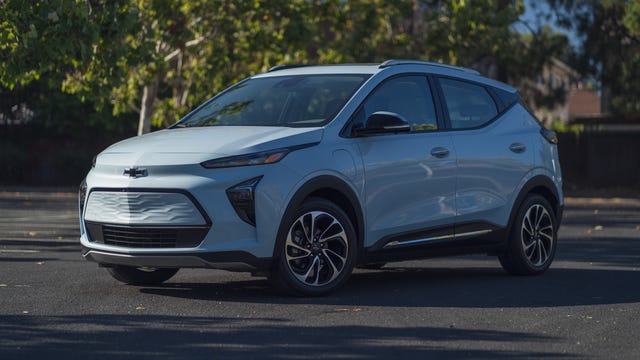
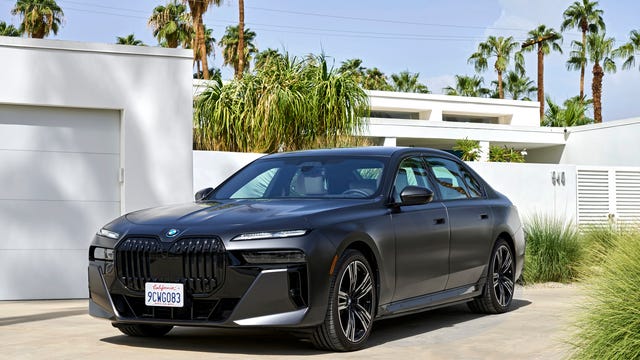
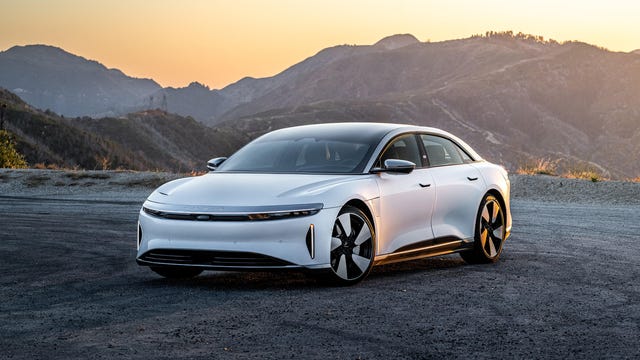
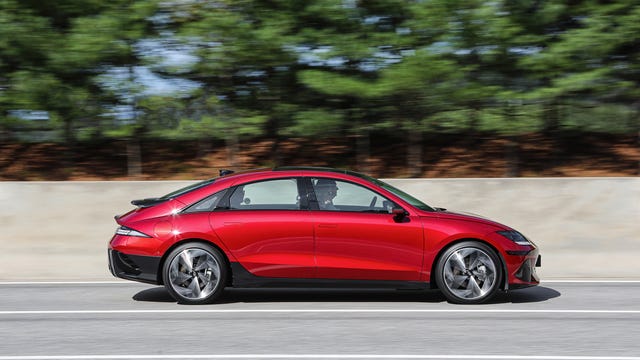
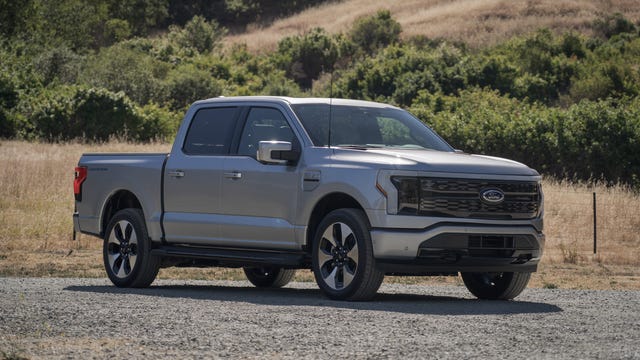
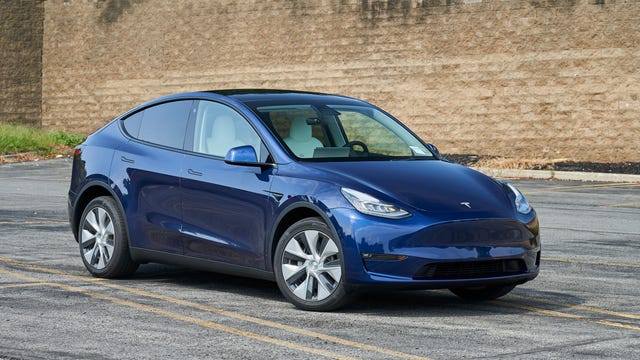
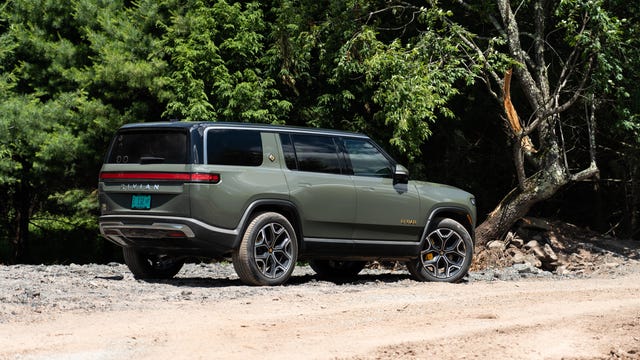
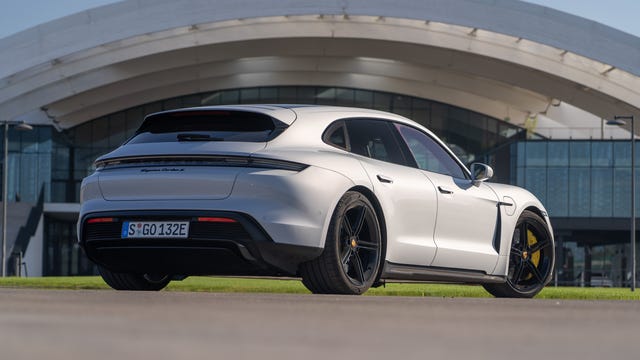










+ There are no comments
Add yours